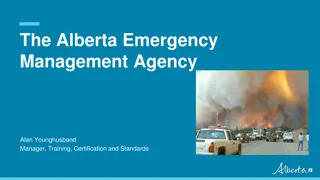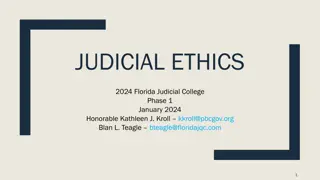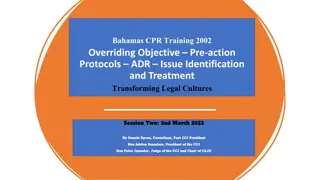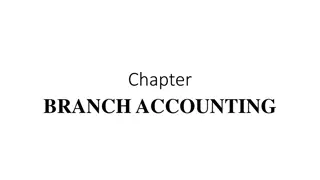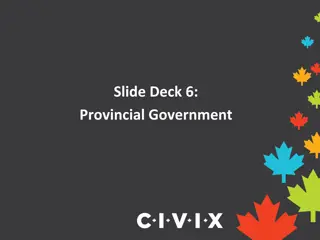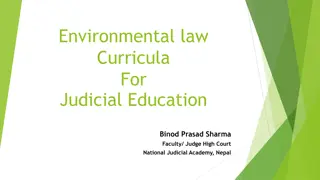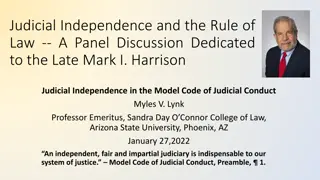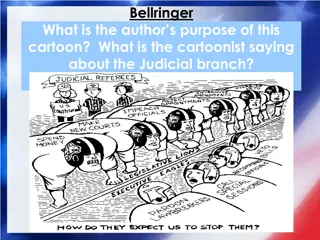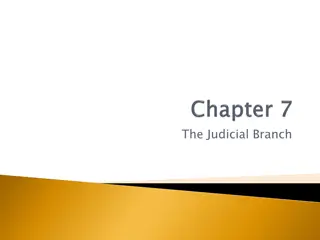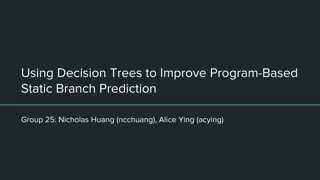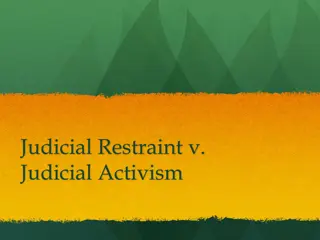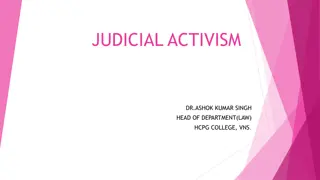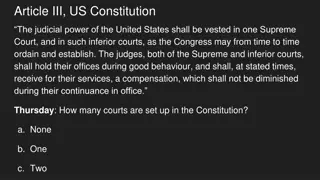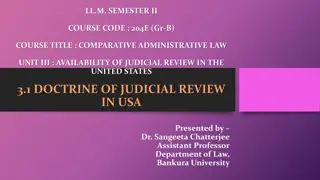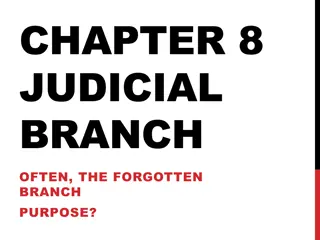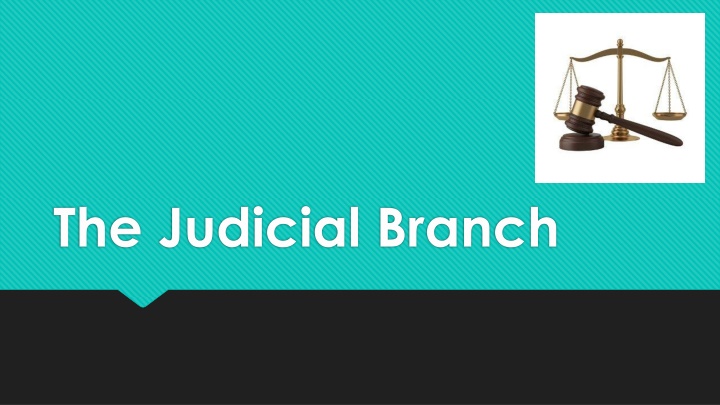
The Judicial Branch and Federal Court System
Explore the structure and functions of the judicial branch, including the Supreme Court and federal courts. Learn about court jurisdiction, types of federal courts, and the essential skills needed to gather and organize information. Dive into the ideology of the Supreme Court and its role in resolving disputes at both federal and state levels.
Download Presentation

Please find below an Image/Link to download the presentation.
The content on the website is provided AS IS for your information and personal use only. It may not be sold, licensed, or shared on other websites without obtaining consent from the author. If you encounter any issues during the download, it is possible that the publisher has removed the file from their server.
You are allowed to download the files provided on this website for personal or commercial use, subject to the condition that they are used lawfully. All files are the property of their respective owners.
The content on the website is provided AS IS for your information and personal use only. It may not be sold, licensed, or shared on other websites without obtaining consent from the author.
E N D
Presentation Transcript
Todays Objective After today s lesson, students will be able to Explain the structure of the judicial branch and identify the tendencies of the Supreme Court Essential Skill: Gather and organize information and data
Ideology of the Supreme Court Groups of 3-4 Examine the 6 infographics Answer the questions on your sheet
Introduction to the Judicial Branch U.S. has a Dual system of courts Federal Courts State Courts Handle criminal and civil cases involving federal law or any constitutional issue Handle criminal and civil cases involving state law Criminal Case Civil Case Government or state charges an individual with violating one or more laws Government or state resolves a dispute between two parties
Introduction to the Judicial Branch Federal Court Structure Supreme Court Created by the Constitution Federal District Courts Created by Congress through the Judiciary Act of 1789 (act as federal trial courts U.S. Court of Appeals Created by Congress in 1891 (act as federal appeals courts)
Federal Court Jurisdiction What is Jurisdiction? The authority of the courts to hear certain cases 2) Appellate Jurisdiction: courts that hear reviews or appeals of decisions from the lower courts Federal Courts of Appeals and the Supreme Court have appellate jurisdiction Types of Federal Jurisdiction 1) Original Jurisdiction: authority to hear a case for the first time Trials are conducted, evidence is presented, and juries determine outcome of case Federal District Court and the Supreme Court (in certain cases) have original jurisdiction 3) Concurrent Jurisdiction: allows certain types of cases to be tried in either the federal or the state courts
Types of Federal Courts 1) District Courts Every state has at least one; more people = more district courts (PA has 3) Currently 94 district courts (with over 550 judges) Have original jurisdiction ONLY (no appellate jurisdiction) Decide civil and criminal cases arising under the Constitution and federal laws Judges serve for life appointed by President of U.S. and confirmed by Senate Can only be removed by impeachment with a guilty verdict
Types of Federal Courts 2) U.S. Court of Appeal Decide appeals from U.S. district courts 12 U.S. Court of Appeals States are divided into circuits, or geographical judicial districts (not every state has one) Also, a circuit for Washington, D.C. and a special appeals court with national jurisdiction Have appellate jurisdiction ONLY (may only review cases already decided by a lower court) Panel of 3 judges decide cases in the Court of Appeals Judges serve for life nominated by President and confirmed by Senate
Participants in the Judicial System Called Litigants Plaintiff The party bringing the charges Defendant The party being accused or charged Jury 12 people who decide the outcome of the trial
The Supreme Court at Work How does the Supreme Court accept a case to review? Most case denied because 1) Justices agree with the lower court decision 2) Justices believe the case does not involve a significant point of law Cases that are accepted must meet the rule of four Four of the nine justices must agree to hear the case Cases presented to the Supreme Court may be presented through 1) Writ of Certiorari an order by the Court (when petitioned) directing a lower court to send up records of a case for review 2) Certificate a lower court asks the Supreme Court about a rule of law or procedures in specific cases
Writing Opinions 3 Types of Opinions 1) Majority Opinion opinion agreed upon by a majority of the justices 2) Concurring Opinion written by a justices or justices who agree with the majority opinion, but not with the reasoning behind the decision 3) Dissenting Opinion written by a justice or justices who disagree with the majority opinion Majority opinion becomes precedent Standards or guides to be followed in deciding similar cases in the future Ex. Roe v. Wade (abortion)
Judicial Philosophy 2 Types of Philosophies 1) Judicial Activism The court should play a more active role in creating national policies and answering questions of conflict in society given current conditions and changes in society 2) Judicial Restraint The court should operate strictly within the limits of the Constitution and only answer questions if a clear violation of the Constitution is present. Policy making should be left up to the executive and legislative branches Follow precedent
Conclusion Reflect on the process of the Supreme Court (appointing judges, structure, how cases reach the courts, or how decisions are made) do you think that the process is fair and democratic, or should their changes be made?

